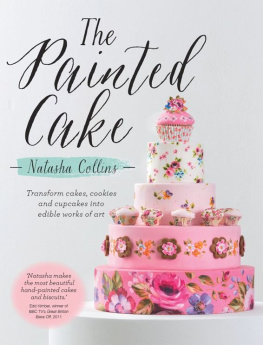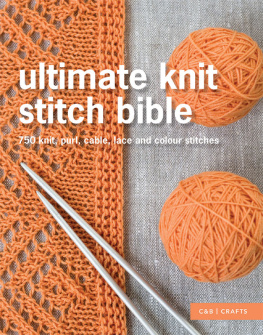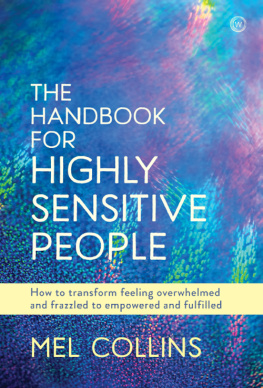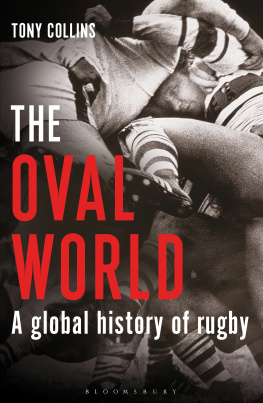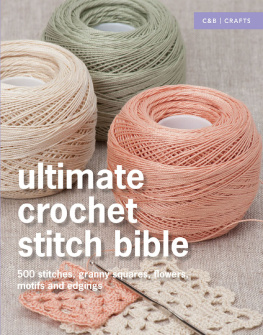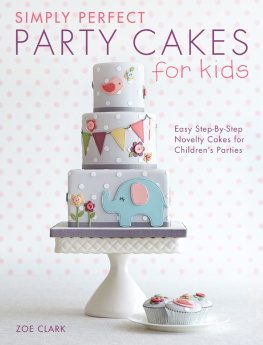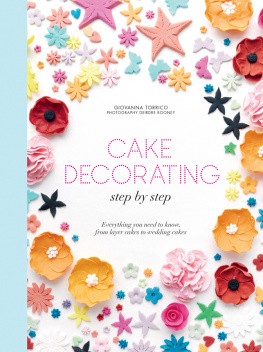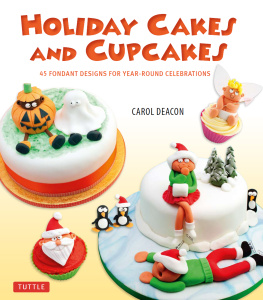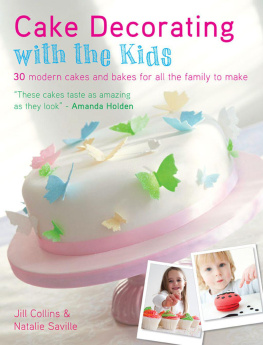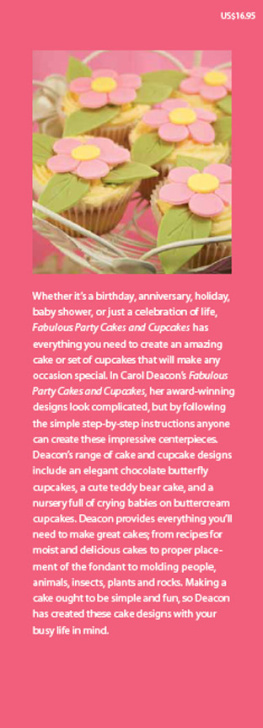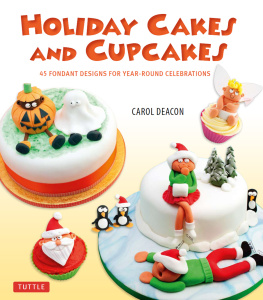Welcome to
The
Painted Cake
I think it was inevitable that I would end up painting on cakes for a living: I hail from a long line of both artists and bakers, and so perhaps it was only a matter of time before someone in my family had the flash of inspiration to combine the two. Both of my parents are working artists, and they always encouraged me to take up my own brush. I admit, I did flirt briefly with the idea of becoming a dentist, but by the time I was 15 I realised it wasnt for me, and my mothers sigh of relief was poorly hidden. (I should add that she has nothing against dentists, but even back then she could see I was more suited to artistic pursuits.) Instead, I trained as an illustrator and then somehow fell into textile design, where I stayed for nearly 10 years.
But baking remained in my blood. My paternal grandmother was a great Lancashire baker (I still remember the taste of her fabulous meat and potato pies) and my father inherited those genes he can whip up a mean chocolate cake at the drop of a hat.
My mothers side of the family is Scottish and Irish, and they have an unwritten rule that nobody should ever be allowed a cup of tea without also having a slice of cake (normally fruit or Madeira). When I was a child, my mother made sure the biscuit tin was always full of homemade goodies.
When I became a full-time mum and gave up my job as a textile designer, I found that I really missed having a creative outlet. I tried various crafty enterprises, but nothing fulfilled me. So I threw all my energy into my childrens birthday parties, taking on board Julia Childs saying: A party without cake is just a meeting. I channelled my creativity into making bigger and better birthday and celebration cakes, until I eventually reached the point when I began to think that my efforts might be good enough to sell commercially.

My first commercial cakes were mostly decorated with fondant models and cut-out flowers. I had no training in sugarcraft and knew that I couldnt (and therefore didnt want to) use piped decorations, as I was terrified the results would be bad, bordering on hideous. However, one of the very first cake commissions I received was for a 70th birthday cake, and the client wanted a Happy Birthday Granddad banner to go on the side. I was horrified, as I couldnt bear the thought of breaking out my piping bag. But working artists rarely have the chance to turn down a job from a client, particularly when their business is just starting out. So, I smiled and said, Sure, no problem!
It turned out that it was a problem. A massive problem. I cant remember actually crying, but after an hour spent piping, scraping off the results and then piping again, Im sure the air turned a vivid shade of blue. I needed a different approach. I thought back to all the research I had done for my new career, and the many hours I had spent online looking at gorgeous cakes, and I recalled some cake decorators painting on fondant, adding features to sugar models. So I decided to do what the fifteen-year-old would-be dentist did: pick up a brush.
My mother knew it all along: I am happiest when I paint. As soon as I put the paintbrush, full of gloopy food colour, onto the fondant it was as if a cartoon lightbulb turned on above my head it felt so much more natural than piping, and the text I had to paint flowed easily. If it felt this easy to write a message, I wondered what else I could paint. The next day I baked a batch of butterfly-shaped cookies, covered them with fondant and started painting flowers on them. And Ive never looked back. There is now a permanent collection of jam jars lined up on my kitchen windowsill stuffed with paintbrushes, pots of food colour litter my work surfaces, we have cake coming out of our ears and, to this day, Im still a terrible piper.
What started out as an escape from the housework, and a way to make a little extra money before eventually returning to textile design, has now become a career, and I couldnt be happier. Ive been lucky enough to work for some amazing clients, on very exciting projects, and I get to travel the world teaching wonderfully enthusiastic sugarcraft students. Most of all, I love helping make peoples special days even more special, and personal, for them.
With my training as an illustrator, Ive always harboured ambitions to write and illustrate my own book. So you can imagine how thrilled I am to be able to write The Painted Cake for you. I hope that while reading this book you will be inspired to take up your own brush and paint, and that you will discover a totally new way of cake decorating. Remember, painting makes you happy!
FINDING YOUR PAINTING STYLE
Dont worry if you have no previous painting experience, either with fondant or in a more traditional medium most of my students are absolute beginners, and they are all amazed at what can be achieved with a little direction and some practice. But it is important to be aware that when you paint on cake, the process is not like other cake-decorating practices where you learn the skills that enable you to create a carbon copy of a cake, every time. Painting is never like that, in any medium, and the results you get will vary slightly each time. As you work through each of the projects in this book, even though you will be decorating cakes (and the instructions, hints and tips in this book are specifically about working on fondant), what you are really learning is how to paint. So, as well as being a cake decorator, you will also become an artist. Im sure that you will find painting on fondant to be an incredible personal, creative endeavour, and one that is extremely rewarding.
You may think that learning the technical skills to enable you to paint will be the hardest part of this process, but actually you will find that the projects provided will help you to demonstrate these skills relatively easily. No, the hardest lesson to learn when starting out as a painter is to love your own hand this is an artists term for the natural style that an individual paints in, and yours will always be unique. The term is very literal: it is your hand that works the paintbrush in a unique way, which leads to the creation of an individual style and from that, unique works of art.

Learning to appreciate how your own hand looks is always difficult. In all my life as a designer, from art college onward, I have found there was always at least one fellow designer whose work I very much admired, but also felt a tinge of envy at their style. I often felt that my own work didnt come up to scratch. Now, when I teach a class, I find that most students have the same experience. They will be in awe of a fellow students work and feel that their own work is inadequate. That little doubting voice should be ignored. Its important to always strive to get better but if, as you work through the projects in this book, you find that you are always comparing your painting to others, then your confidence will ebb away. Please, dont let that happen! Dont waste any time worrying that your work isnt good enough, because it is it really is you just need to learn to appreciate it. Accept that even though it is different from anybody elses, your own hand, your own style of painting, is as good as anyone elses.

